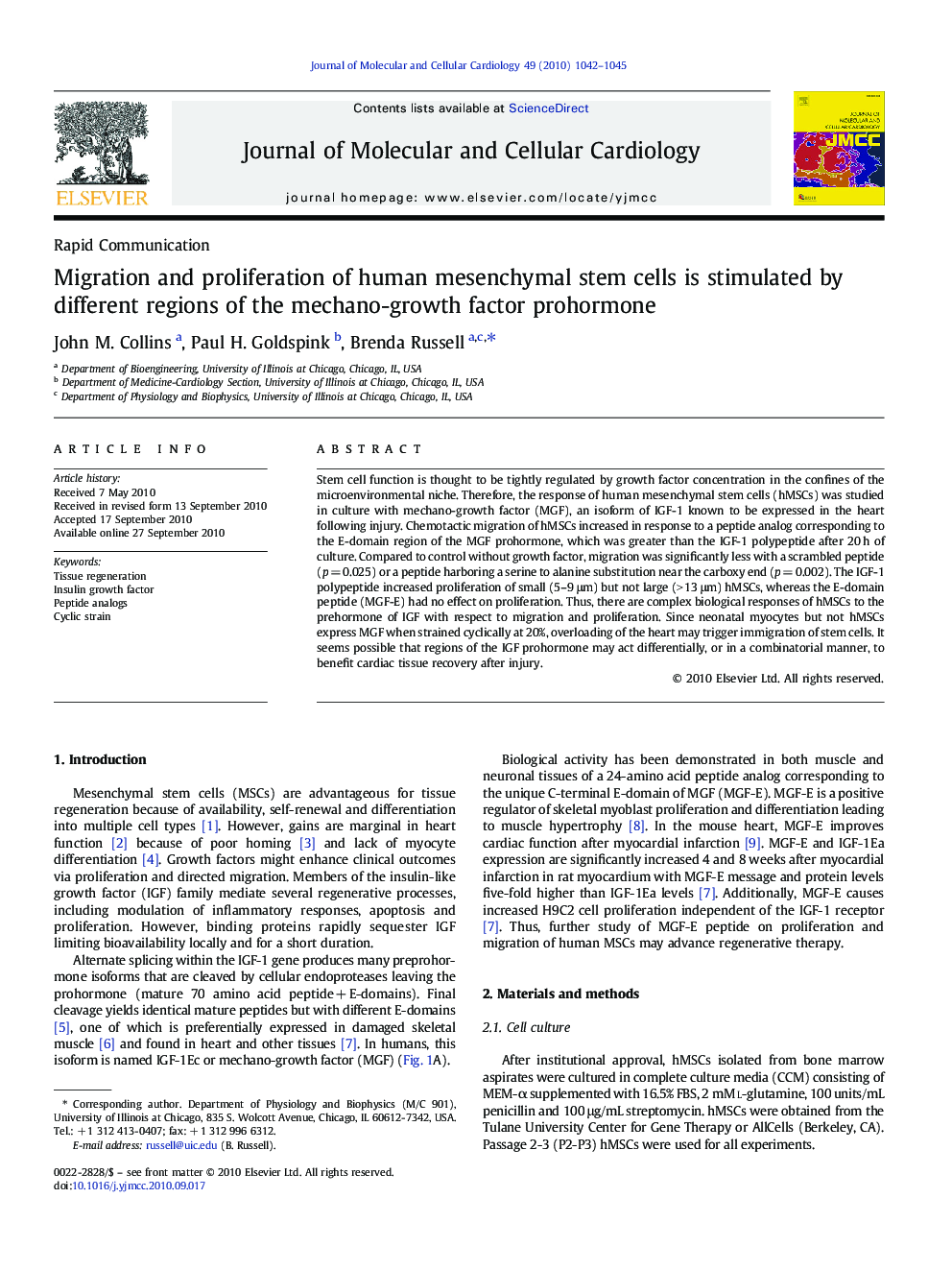| Article ID | Journal | Published Year | Pages | File Type |
|---|---|---|---|---|
| 2190913 | Journal of Molecular and Cellular Cardiology | 2010 | 4 Pages |
Stem cell function is thought to be tightly regulated by growth factor concentration in the confines of the microenvironmental niche. Therefore, the response of human mesenchymal stem cells (hMSCs) was studied in culture with mechano-growth factor (MGF), an isoform of IGF-1 known to be expressed in the heart following injury. Chemotactic migration of hMSCs increased in response to a peptide analog corresponding to the E-domain region of the MGF prohormone, which was greater than the IGF-1 polypeptide after 20 h of culture. Compared to control without growth factor, migration was significantly less with a scrambled peptide (p = 0.025) or a peptide harboring a serine to alanine substitution near the carboxy end (p = 0.002). The IGF-1 polypeptide increased proliferation of small (5–9 μm) but not large (> 13 μm) hMSCs, whereas the E-domain peptide (MGF-E) had no effect on proliferation. Thus, there are complex biological responses of hMSCs to the prehormone of IGF with respect to migration and proliferation. Since neonatal myocytes but not hMSCs express MGF when strained cyclically at 20%, overloading of the heart may trigger immigration of stem cells. It seems possible that regions of the IGF prohormone may act differentially, or in a combinatorial manner, to benefit cardiac tissue recovery after injury.
Research Highlights► Migration of human mesenchymal stem cells increased with MGF-E peptide. ► A serine to alanine substitution in MGF-E reduced migration significantly. ► IGF-1 polypeptide increased proliferation of small but not large cells. ► MGF-E had no effect on human mesenchymal stem cell proliferation. ► Cyclic strain induces MGF-E in neonatal myocytes but not mesenchymal stem cells.
